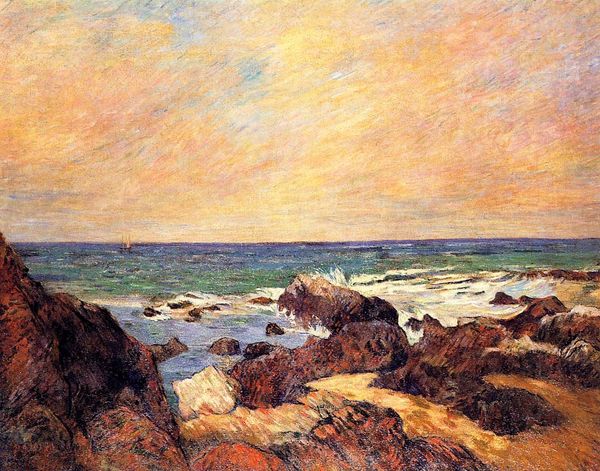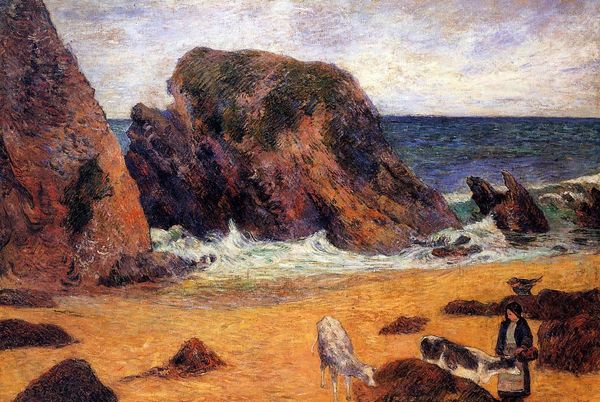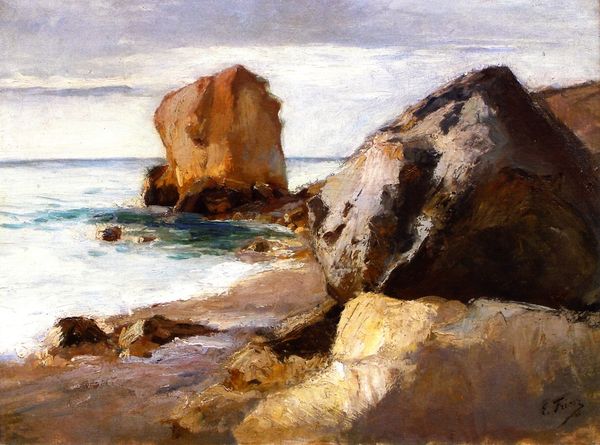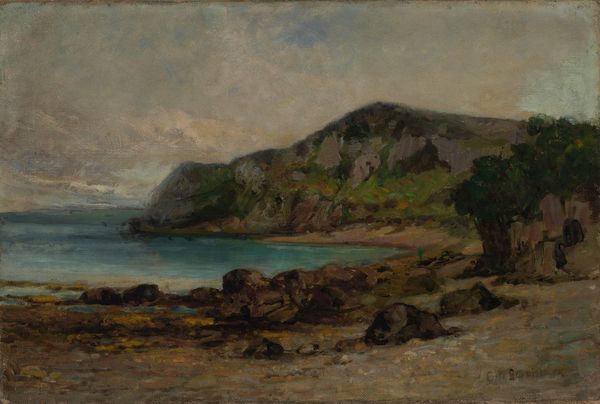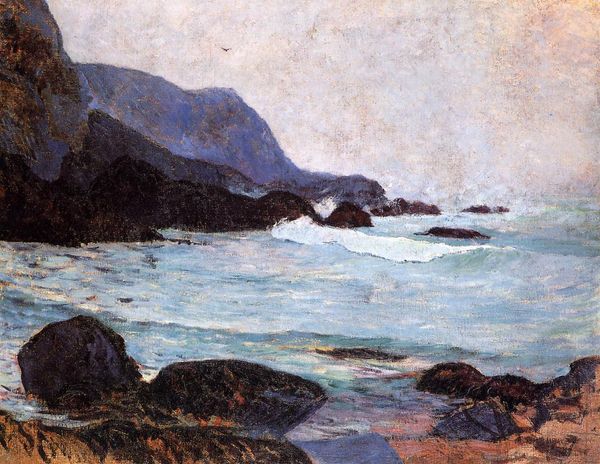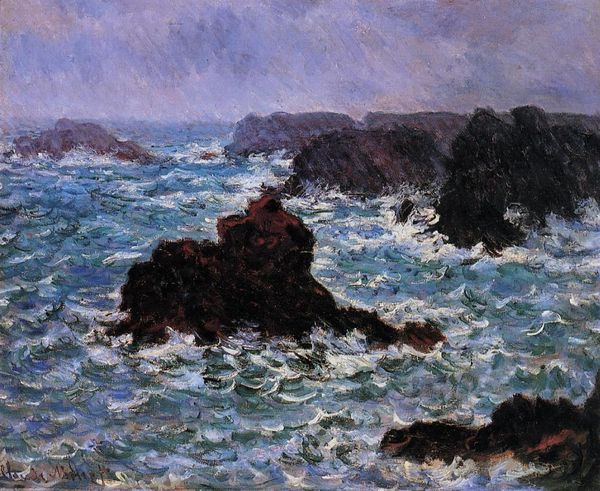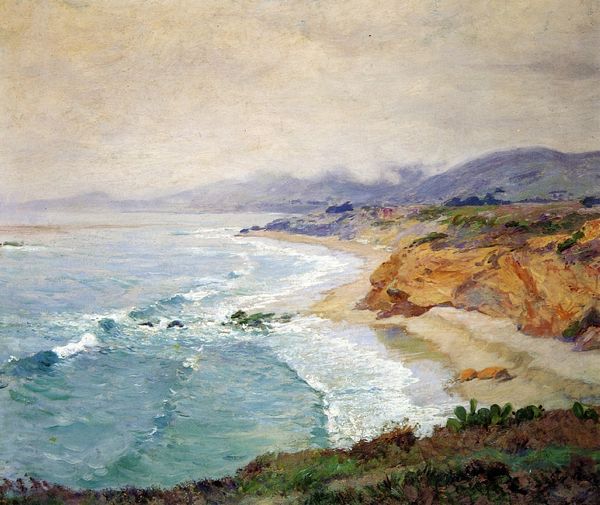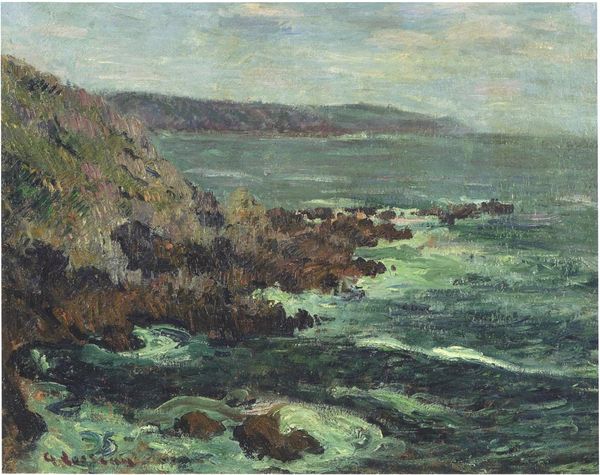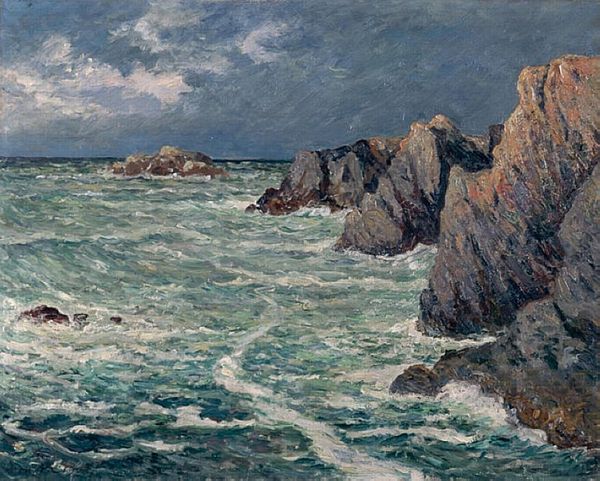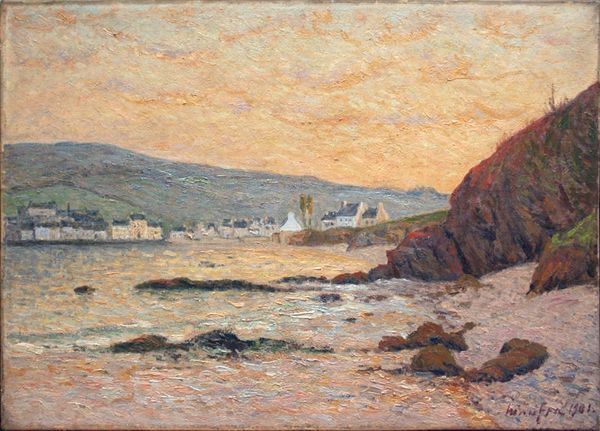
oil-paint
#
impressionism
#
oil-paint
#
landscape
#
impressionist landscape
#
oil painting
#
seascape
#
post-impressionism
Copyright: Public Domain: Artvee
Editor: This is Paul Gauguin's "La Côte rocheuse, ou Rochers au bord de la mer," painted in 1886 using oil on canvas. It gives me such a serene feeling, almost dreamlike. What catches your eye, what’s your interpretation of it? Curator: Gauguin’s seaside scenes are always interesting when considering his later pursuit of "authenticity" in Tahiti. This painting, with its visible brushstrokes and muted colors, fits into the Post-Impressionist moment. But, how do we reconcile its fairly conventional subject matter with Gauguin’s radical artistic journey? Do you see anything here that anticipates that shift? Editor: I guess I don’t see the bold colors that come to mind when I think of his Tahitian paintings. It feels… restrained. So was he trying to find a market, before his work would evolve and when it became more politically charged? Curator: Exactly. Remember, the art world in Paris was still largely controlled by the Salon system at this time. An artist like Gauguin needed to navigate these institutions to gain recognition. Was his vision of Tahiti also formed in response to the perceived decadence or restriction in France at the time? Think about the context: Colonialism was a powerful force and a mindset back then. Editor: That makes sense. It's interesting to consider this landscape not just as a scene but as a product of that social and political climate. Gauguin wasn’t painting untouched reality; he was already engaging with cultural expectations. Curator: Precisely. Seeing the painting within the history of art institutions really transforms our understanding of his later work and what exactly he may have been rejecting – or, perhaps more problematically, appropriating. Editor: I'll never look at a Gauguin seascape the same way again. This really shows how important it is to place art within the society that created it.
Comments
No comments
Be the first to comment and join the conversation on the ultimate creative platform.
